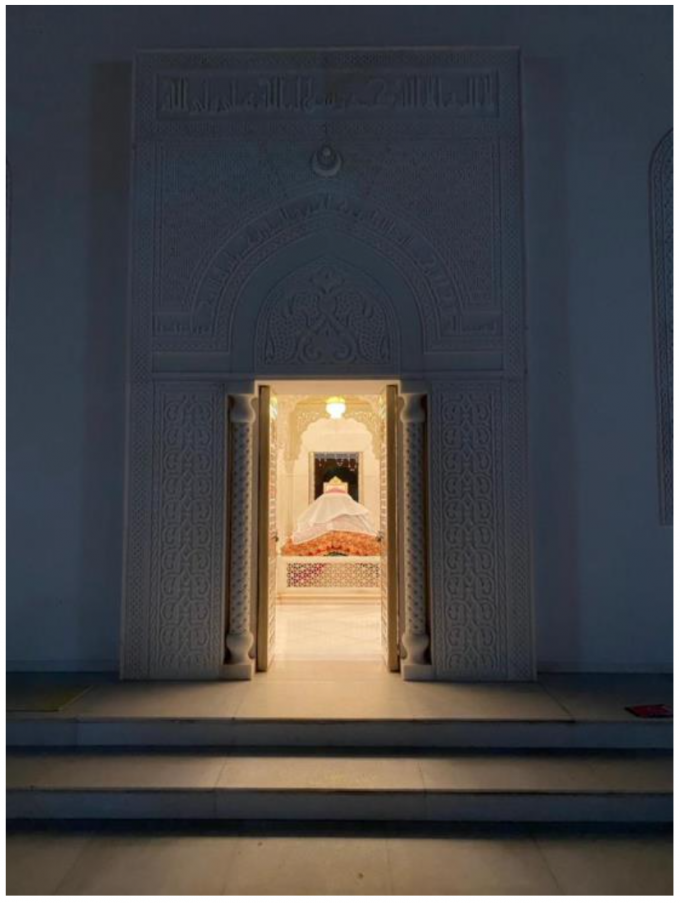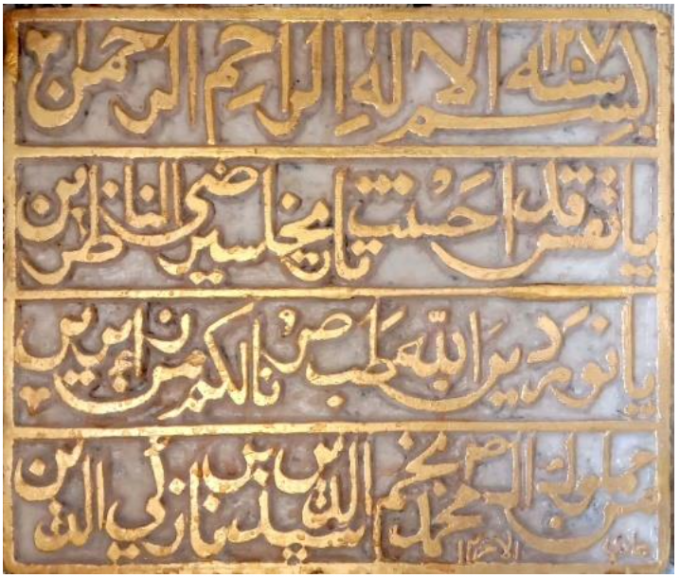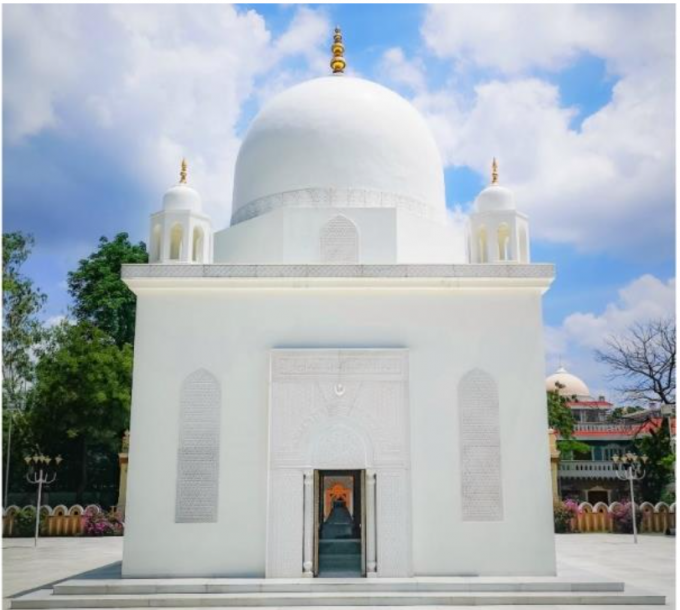M. Husain Chiba

The pioneering efforts for the establishment of Dawat in Hindustan were made by Maulaya Abdullah QR and Maulaya Ahmed QR who persevered there in the era of Maulana al-Imam al- Mustansir Billah AS. Some sources also mention that an approximate contemporary of these two Dais, Maulaya Nooruddin QR headed towards the Deccan region. In his writings, Syedi Khauj bin Malak QR narrates that Maulaya Nooruddin QR and his brother had travelled to al-Qahera in the era of Imam Mustansir AS. It is during this time that both sahebo benefitted from the tutelage of Syedna al-Muayyad al-Shirazi RA.
Maulaya Nooruddin’s QA wafaat is said to have occurred on 15th Muharram al-Haram. His Qubba Mubaraka is located in an area called Dongam, which is situated in the Mehkar Taluka, Buldana district of Maharashtra. In the era of the 42nd Dai Mutlaq, al-Dai al-Ajal Syedna Yusuf Najmuddin RA, the first ever Qubba Mubaraka of Maulaya Nooruddin QR was erected. After its completion, Syedna Najmuddin RA travelled to Dongam in 1207 AH/ 1792-3 CE and inscribed his name under a few panegyrical verses on the main portal of the Qubba Mubaraka.

Inscription of Syedna Najmuddin RA
The existing Qubba Mubaraka that can be seen today was built by the 52nd Dai Mutlaq, al-Dai al-Ajal Syedna Mohammed Burhanuddin RA. Upon its completion in 1433 AH/ 2012 CE, Syedna al-Dai-al-Ajal RA travelled to Dongam and presided over its ceremonial inauguration. Gazing at the Qubba Mubaraka replete with its magnificent architectural features is a source of bliss for observers.

The Qubba Mubaraka of Maulaya Nooruddin QR
The four exterior portals of the Qubba Mubaraka have been decorated with the mihrab shareef of Imam Mustansir Billah AS from Jami Ibn Tulun in al-Qahera. The mahareeb shareefah commissioned by the Aimmat Fatimiyeen AS have been replicated in only the most venerated masajid all over the world. This would mark the first instance where a Qubba Mubaraka has been adorned with a Fatemi mihrab.

The Mihrab commissioned by Imam Mustansir Billah AS
The intricate and elegant mihrab is a marvelous sight. It has a rectangular frame with an inverted U-shaped band enclosing two horizontal bands above an arched frame that encloses a smaller arch. The border of the outer arch displays a Quranic ayat shareefah while the border of the inner arch remains empty. It is possible that the scheme of decoration of this mihrab may be a combination of Egyptian and Persian styles. It consists of nested frames and arches, a scheme that differs from earlier and even later Egyptian mihrabs. Some scholars see similarities between this mihrab shareef and a series of flat Persian mihrabs. Another feature that points towards eastern influence are the Y-fret motifs filling the spandrels of the arches. The combination of these various influences suggests that the design of the original mihrab built in the era of Imam Mustansir Billah AS was completed by a team of both Egyptian and Eastern (probably Iranian) designers.
The main dome is another prominent feature of the Qubba Mubaraka. The dome of the Qubba Mubaraka of Maulaya Nooruddin QR has been replicated from the main qubba (dome) of al-Jami al-Juyushi. It rests on an octagonal drum similar to the dome of al-Jami al-Juyushi. Each of the four sides of the drum consists of a blind window decorated with different carvings. The dome rests on an octagonal drum which is further supported by a four-sided structure. In the Qubba Mubaraka of Maulaya Nooruddin QR, the frame of the Qubba takes the place of the four- sided structure.

The main dome of the Qubba Mubaraka
The mihrab of Jami Ibn Tulun and the dome of al-Jami al-Juyushi are two of the most notable Fatemi aathaar evident in the Qubba Mubaraka of Maulaya Nooruddin QR. The reproduction of both the mihrab and the dome of al-Jami al-Juyushi–both being constructions commissioned by Imam Mustansir Billah AS– in this Qubba alludes to the historical association between this illustrious Imam AS and his noble Dai QR.
At the edge of the dome is a striking panel of geometric and vegetal motifs replicated from the northern minaret of al-Jami al-Anwar. This band of arabesque has been greatly applauded for its attention to detail. It is said that the northern minaret with its prominent location and large openings on the upper stories not only served the purpose of the mi’dhanat but was also used as a beacon of light placed specifically for caravans and other travellers approaching the city from the north. The word ‘noor’ in the English language translates to light. In the Quran Majeed, Allah Subhanahu proclaims that He extracts mumineen from the depths of darkness towards the light. This motif from the northern minaret indicates a tribute to Maulaya Nooruddin’s QR glorious khidmat for his Imam AS. At a time in the Deccan, where there were little to no believers in the faith, Maulaya Nooruddin’s arrival saw mumineen being taken from the depths of darkness to the light of Islam and imaan.

The panel of motifs at the edge of the Qubba Mubaraka
Although located in a rural setting, the Qubba Mubaraka through its architectural vocabulary, intricately carved motifs and other aesthetic features creates a gestalt that transports the viewer to the era of the Fatemiyeen AS in al-Qahera. For mumineen, it brings them closer to their culture and makes them adhere to their true identity, transcending time and place.
Photo Credits: Mulla Aliasghar bhai Sunelwala–Dongam, Sighat-ul-Mazaraat Disclaimer–Viewpoints in blog posts do not necessarily reflect those of RadiantArts. About the author–M. Husain Shk. Juzar bhai Chiba graduated from Aljamea-tus-Saifiyah in 1441/2019 bearing the degree of al-Faqih al-Jayyid. Specializing in Islamic History, he is an enthusiast of Islamic and Fatimi Art and Architecture. He is also a Microsoft Certified Trainer for Microsoft 365 applications.

Leave a comment
You must be logged in to post a comment.